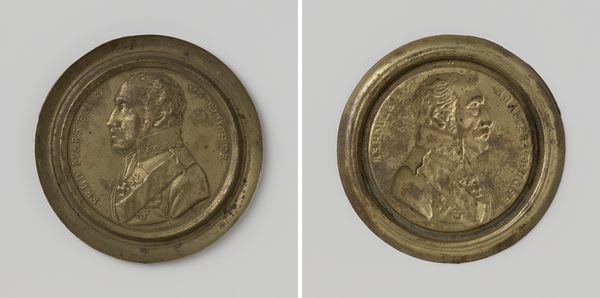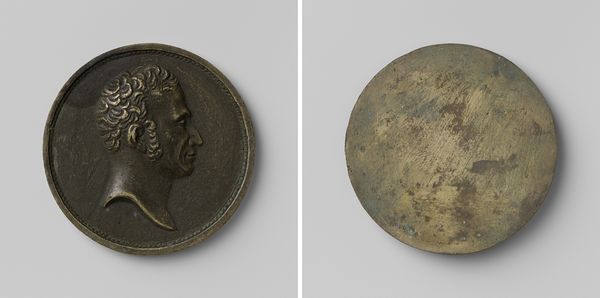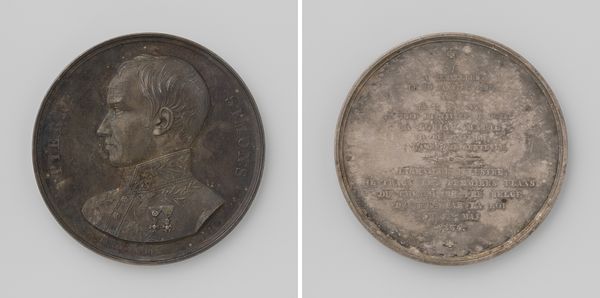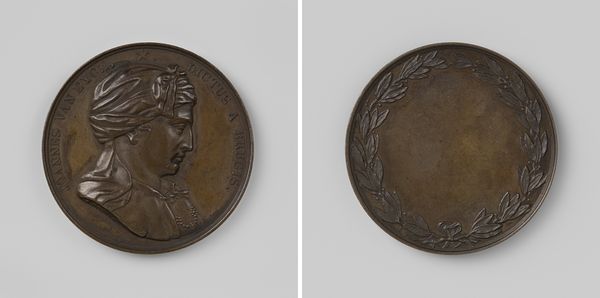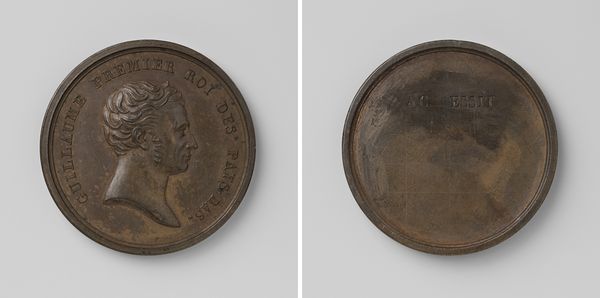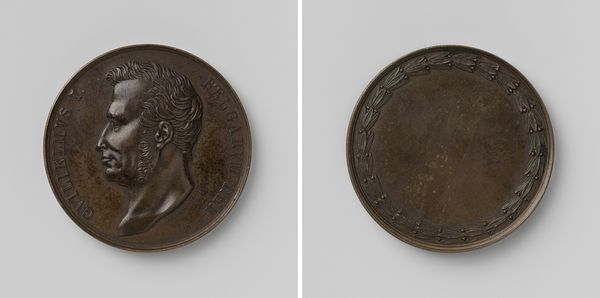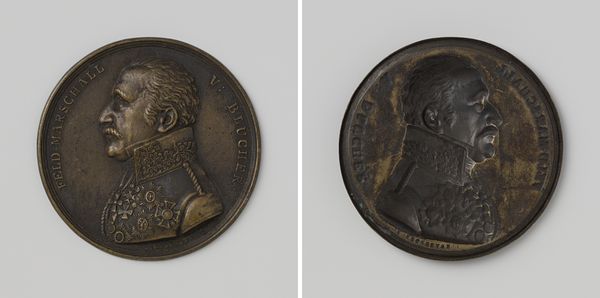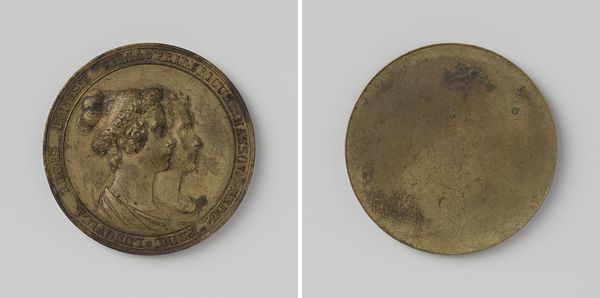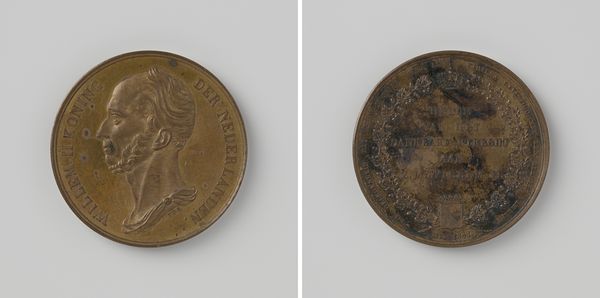
Willem II, koning der Nederlanden, penning van de tweede grootte 1840 - 1841
0:00
0:00
bronze, sculpture
#
portrait
#
neoclacissism
#
sculpture
#
bronze
#
sculpture
#
history-painting
Dimensions: diameter 4.2 cm, weight 32.81 gr
Copyright: Rijks Museum: Open Domain
Editor: Here we have a bronze piece entitled "Willem II, koning der Nederlanden, penning van de tweede grootte", made around 1840-1841 by Johannes Petrus Schouberg. It’s quite small, and the Neoclassical style is really evident in the profile. What do you make of this as a historical object? Curator: I see more than just a portrait, but a complex artifact embodying power, legacy, and even national identity. Consider the historical backdrop: the rise of nation-states and the consolidation of monarchical authority. Medals like this weren't simply commemorative objects, but tools for constructing a desired image of the ruler. What aspects of Willem II's portrayal seem particularly significant to you? Editor: Well, the laurel wreath on the reverse seems very deliberate. Is that standard iconography for rulers at the time? Curator: Precisely! The laurel evokes classical antiquity, linking Willem II to the ideals of Roman leadership and virtue, associating him with victory and glory. It speaks volumes about the messages they were trying to send. What does that idealized portrayal obscure, perhaps? Editor: Maybe the political turmoil of the time? The revolutions brewing across Europe? Curator: Exactly. These medals offered a carefully constructed image, a counter-narrative to the growing calls for democracy. Consider the circulation of this piece – who would have had access to it, and what impact might it have had? Editor: It definitely gives me a different perspective on something as simple as a coin or medal! Curator: Indeed! By examining art like this through a critical lens, we uncover the stories behind the image.
Comments
No comments
Be the first to comment and join the conversation on the ultimate creative platform.

